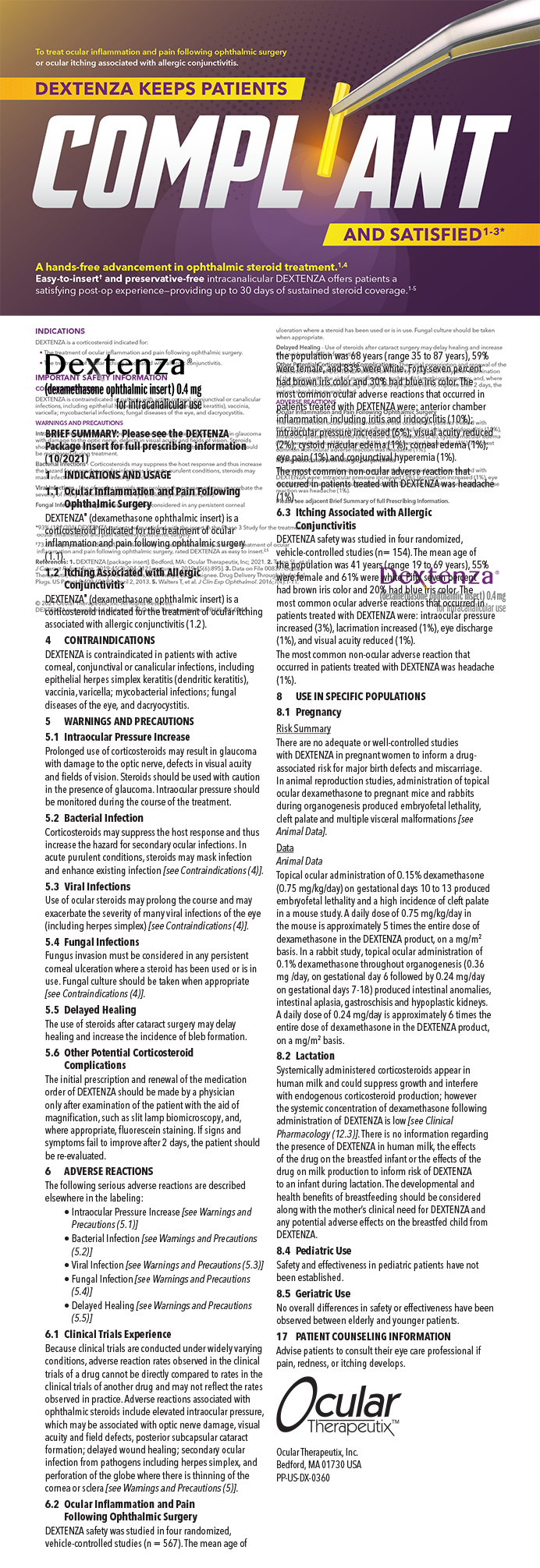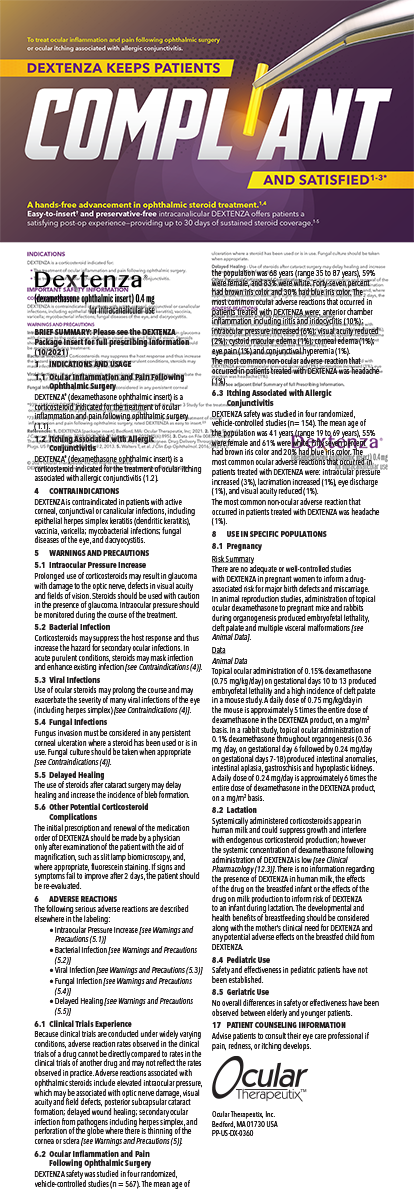
We recently reported the interim results of a prospective, single-armed, multicenter case series that examined the efficacy of intense pulsed light (IPL) for treatment of dry eye caused by meibomian gland dysfunction (MGD).1 Our initial experience suggests that IPL is an extremely promising intervention. Our findings are in agreement with the work of Rolando Toyos, MD, who observed that patients who were treated with IPL for various skin conditions reported significant improvement in their ocular symptoms and signs, in some cases including resolution of concomitant MGD.2
BACKGROUND
For the study, 40 patients with moderate to severe MGD were enrolled from two centers in the United States. Patients were treated using IPL with Optimal Pulse Technology (OPT) on the Lumenis M22 platform. Each patient was treated in four sessions at 3-week intervals, and followed-up at 9, 12, and 15 weeks after the initiation of treatment.
The primary outcome was the change in tear breakup time (TBUT) from baseline to the final follow-up. Secondary endpoints included change from baseline in standard patient evaluation of eye dryness or SPEED score (subjective symptoms), meibomian gland score, tear osmolarity, corneal fluorescein staining, and lipid layer thickness measured at each of the three follow-up visits.
IPL with OPT offers several theoretical safety advantages compared with other IPL delivery systems. In OPT, the IPL energy is evenly distributed during the pulse. This enhances safety and lessens the likelihood of delivering a suboptimal treatment. On the M22 platform, the treatment may be performed using one of the predefined settings (for example, the “rosacea/telangiectasia” setting); however, the operator has the ability to titrate and adjust the IPL parameters so as to take account of immediate skin responses.
Treatment was applied from ear to ear over the malar area. Skin types 1 through 3 were treated with a double-pass technique using the rosacea/telangiectasia preset and a high-pass filter of 560 nm; skin types 4 and 5 were treated with the same preset but with a 590-nm high-pass filter using a single-pass technique. Presence of skin rosacea was not required as an inclusion criterion, neither was it necessary for patients to have concomitant ocular rosacea.
STUDY RESULTS
So far, we have collected and analyzed data from 18 eyes that completed the schedule of treatments and follow-ups: by the end of the study, the mean TBUT improved by 164% ( < .0001). Significant improvements were also recorded at all three follow-ups in SPEED scores, corneal fluorescein staining, meibomian gland scores, and tear osmolarity.
Lipid layer thickness measurements did not change much by the end of the study; however, upon subjective evaluation, the integrity of the lipid layer appeared to improve significantly.
Additionally, more than 85% of patients reported improvement of their dry eye symptoms; 100% of patients had a reduction in the number of signs associated with DED. Patients reported a decrease in eye drop use.
DISCUSSION
We believe that IPL directs intense energy that is preferably absorbed in the hemoglobin of abnormal blood vessels, initiating a process that destroys the abnormal blood vessels and decreases the release of proinflammatory substances. In addition, the heat produced by absorption of IPL energy may have an additional two-fold effect: reducing the bacterial load on the eyelids by heating up and thus eliminating mites and liquefying viscous meibum by warming the meibomian glands.
The initial results of this study are notable for the high degree of success in treating an insidious disease entity that is difficult to treat. Completion of the study, and longer-term follow-up, will provide additional information about the viability of IPL with OPT for treatment of MGD-related dry eye.
The improvement in osmolarity scores in this study is encouraging, as it serves as evidence that IPL treatment may interfere with a persistent, self-perpetuating cycle of inflammation. Hyperosmolarity is a central mechanism of DED and tear film instability, causing damage to the ocular surface and activating a cascade of inflammatory events.4 Published studies suggest that decreases in tear hyperosmolarity precede improvements in patient-reported symptoms5; the implication is that breaking a cycle of inflammation early in the natural history of the disease improves outcomes. In our study, in the majority of patients, IPL effectively lowered osmolarity to normal levels. This result indicates that IPL treatment produces a durable and lasting effect by stopping the chronic inflammation of meibomian glands, thus enabling the restoration of a viable tear film.
It was not unusual for patients in our study to experience a benefit immediately after the first treatment that waned by the first follow-up, but became more pronounced by the second and third follow-up. Of note, TBUT, which is a viable index of functional improvement, continued to improve over time. This waxing and waning effect of IPL in the short-term with modest to profound improvement overall in the intermediate-term is not surprising given the chronic nature of inflammation associated with MGD and dry eye disease. As we study more patients, we will continue to learn about how we can best use IPL to more completely treat the inflammatory component. We believe that the treatment protocol used in the study was robust and sufficient to abate inflammation, although adjustments of IPL settings may be required.
Although lipid layer thickness did not improve significantly by the end of the study, this may be less significant than improvements observed in the quality of the lipid layer. First, in some cases patients were enrolled with part of their meibomian glands already atrophied. In such cases, improvements in lipid layer quantity is extremely unlikely, if not impossible. Second, one has to remember that in DED, structure and function do not always correlate. Hence, restoration of the lipid layer may not be a necessary condition for patients to exhibit gains in signs and/or symptoms.
We look forward to analyzing the results of additional patients enrolled in our case series. Based on our initial experience, IPL appears to be a viable and potentially advantageous treatment option for MGD-related DED.
Steven J. Dell, MD
• founder and medical director of Dell Laser Consultants in Austin, Texas
• chief medical editor of CRST
• (512) 327-7000
• financial disclosure: consultant to Lumenis



